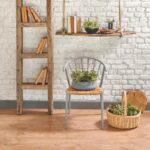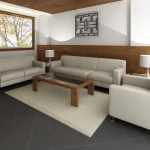Why traditional style remains a popular choice among homeowners and the key characteristics and elements that define traditional home dcor.
Traditional home dcor exudes a sense of charm and timeless elegance that continues to captivate homeowners. Despite the rise of modern and contemporary design trends, many individuals still find comfort in the familiar and classic elements of traditional style. Its ability to create an inviting and cozy atmosphere makes it a popular choice for those looking to infuse their homes with warmth and sophistication.
One of the reasons why traditional style endures is its emphasis on heritage and history. Traditional interiors often showcase ornate details, intricate woodwork, and classic architectural features that pay homage to the past. Additionally, traditional pieces are known for their quality craftsmanship, which adds an undeniable sense of value to any space.
Key characteristics of traditional home dcor include warm color palettes, rich textures, and a sense of symmetry. Warm neutrals such as beige, taupe, and cream are commonly used as base colors in traditional interiors, creating a welcoming backdrop for other design elements. Materials like wood, leather, and velvet are often incorporated to add depth and texture to rooms.
From furniture to accessories, every element within a traditional home has its purpose in contributing to the overall aesthetic. The careful selection of iconic furniture pieces such as wingback chairs or Queen Anne-style tables helps create an atmosphere steeped in tradition.
Fine details such as decorative hardware on cabinets or intricate carvings on bed frames further enhance the charm of these spaces. By blending various styles within a cohesive framework, homeowners can achieve a truly fulfilling traditional aesthetic that stands out from the ordinary.
Embracing Classic Color Schemes
When it comes to traditional home décor, selecting the right color palette is crucial in capturing the essence of this timeless style. Traditional interiors often feature warm, rich, and muted tones that create a cozy and inviting atmosphere. These classic colors help to evoke a sense of elegance and sophistication while maintaining a sense of comfort.
To achieve the perfect traditional color scheme, start by focusing on earthy hues such as shades of brown, beige, taupe, and cream. These colors serve as a solid foundation for your overall design and can be used on walls, furniture upholstery, and window treatments. Rich jewel tones like deep reds, blues, greens, and purples are also commonly found in traditional interiors and can be incorporated through accent pieces or accessories.
In addition to these base colors, it is important to consider complementary shades that will add depth and dimension to your space. For example, pairing a deep red with a soft gold or using navy blue alongside ivory can create an elegant contrast.
When choosing complementary colors for your traditional home’s color scheme, consider the overall mood you want to achieve. Warmer tones tend to create a more intimate and cozy ambiance, while cooler shades can lend a refreshing touch.
Creating a cohesive color scheme throughout your home is essential for achieving the desired traditional aesthetic. To ensure that your chosen colors harmonize well together, consider creating sample boards or using online tools to visualize how different hues will work together in your space.
| Color Category | Examples |
|---|---|
| Earthy Hues | Brown, Beige, Taupe |
| Jewel Tones | Deep Red, Blue, Green |
| Complementary Colors | Soft Gold, Ivory, Navy Blue |
Creating a Strong Foundation
Traditional style home décor relies heavily on the furniture and upholstery choices to create a strong foundation for the overall design. Traditional furniture pieces are known for their timeless elegance and craftsmanship, embodying the charm of bygone eras. When selecting furniture and upholstery for a traditional home, it is important to consider both the aesthetic appeal and the quality of materials.
One iconic furniture piece that embodies traditional style is the Chesterfield sofa. Known for its deep button tufting, rolled arms, and luxurious leather upholstery, the Chesterfield sofa adds a touch of sophistication to any traditional living room or study. Other popular traditional furniture pieces include wingback chairs, Queen Anne style dining chairs, and claw-footed tables. These classic designs can be found in various finishes such as rich mahogany or elegant walnut wood.
When choosing upholstery fabrics for traditional furniture, it is common to opt for luxurious materials such as velvet, silk, or brocade. These fabrics not only add texture and depth to the space but also enhance the overall elegance of the room. Upholstery should feature decorative details like tassels, fringes, or nailhead trim to further emphasize the traditional aesthetic.
In order to achieve a cohesive look in a traditional space, mixing and matching different furniture styles is encouraged. Combining antique pieces with more contemporary ones can create an interesting contrast and add character to the room.
To maintain unity within this eclectic mix of styles, it is important to consider factors such as scale, proportion, and color coordination when selecting furniture pieces. By carefully curating a collection of traditional furniture items that complement each other well, homeowners can achieve a harmonious traditional style that exudes timeless elegance throughout their home.
Weaving Timeless Patterns
Traditional home décor is all about capturing the essence of elegance and sophistication. One way to achieve this is by incorporating timeless patterns and textiles into your interior design. Traditional prints like damask, toile, and floral patterns can add a touch of charm and create visual interest in your space.
When choosing traditional prints, it’s essential to consider the overall color scheme of your room. You can opt for classic color combinations like rich burgundy, warm gold, deep greens, or muted blues. These colors lend themselves well to traditional interiors and evoke a sense of heritage and timelessness.
Incorporating traditional textiles into your upholstery, curtains, and throw pillows is another way to infuse your home with timeless elegance. Fabrics like brocade, velvet, silk, or chintz can instantly elevate the look of any space. Whether you choose to cover an armchair with a lush damask fabric or layer floral-patterned pillows on your sofa, these textiles will bring depth and texture to your décor.
To create a visually engaging space, consider layering various patterns and textures. For example, you can combine a damask print wallpaper with toile curtains or mix different floral patterns on accent chairs and throw pillows. Just ensure that there is a cohesive color palette throughout the room to tie everything together harmoniously.
By weaving timeless patterns into your traditional décor, you can cultivate an environment that exudes sophistication and refinement. The key is to select prints and textiles that complement each other while aligning with the overall style of the room. With careful consideration and attention to detail, you can create a space that showcases the beauty of traditional design.
Enhancing the Elegance
Traditional window treatments and drapery styles play a crucial role in enhancing the overall elegance of a traditional home. These elements not only add visual interest and texture to the space but also provide privacy and control over natural light. In this section, we will explore different traditional window treatment options, offer tips on selecting the right fabric, length, and style, and discuss how to incorporate decorative hardware and trims for a luxurious touch.
When it comes to traditional window treatments, there are various options to choose from. Valances, swags, drapes, and curtains are popular choices that can instantly elevate the look of any room. Valances are perfect for adding a decorative element to the top of windows while allowing plenty of natural light to enter the space. Swags, on the other hand, create an elegant draped effect that adds softness and sophistication.
Selecting the right fabric for your window treatments is essential in achieving a traditional aesthetic. Fabrics with intricate patterns like damask or toile work particularly well in traditional interiors. For a more opulent look, consider using velvet or silk fabric with rich textures. When it comes to length and style, floor-length panels with ornate tiebacks or tassels can create a grand and formal atmosphere.
Incorporating decorative hardware is another way to enhance the elegance of your window treatments. Finials, holdbacks, curtain rods in materials like brass or antique gold can add a touch of luxury. Trims such as fringes or braids can be used on valances or along the edges of drapery panels to give an extra layer of detail. Remember that these accents should complement your existing furniture and overall color scheme for a cohesive look.
Traditional Accents and Accessories
Identifying Key Accent Pieces
When it comes to traditional home décor, the right accents and accessories can truly elevate the overall aesthetic of your space. To add those finishing touches that complete the traditional look, it is crucial to identify key accent pieces that embody the charm and elegance of traditional style. Antique clocks, ornate mirrors, and botanical artwork are some examples of classic accent pieces that can enhance your traditional interior.
Antique clocks not only serve a functional purpose but also bring a sense of history and sophistication to your home. Look for intricately designed mantel or wall clocks with ornate details and rich finishes. These timeless pieces can become focal points in your rooms while adding an antique flair.
Ornate mirrors with gilt frames are another staple in traditional home décor. When strategically placed, they can create the illusion of a larger space while reflecting light and adding depth to the room. Choose mirrors with intricate carvings or decorative accents that complement the overall style of your home.
Botanical artwork, such as oil paintings or framed prints featuring lush flowers and landscapes, can add a touch of natural beauty to your traditional interior. Look for pieces that incorporate soft colors and delicate brushstrokes to maintain the elegant ambiance.
The Art of Displaying Collections
Displaying collections and vintage treasures is an excellent way to showcase your personal style within a traditional setting. Whether you have inherited family heirlooms or enjoy collecting antique china or silverware, incorporating these cherished items into your décor will lend an authentic and unique feel to your space.
To properly display collections, consider using glass-front cabinets or open shelves where you can arrange items in an organized and visually appealing manner. Group similar items together for cohesiveness, utilizing varying heights to create visual interest. For example, you could place teacups on top of saucers or stack books alongside decorative boxes.
Don’t be afraid to mix and match different types of collections or integrate them into unexpected areas. For instance, vintage perfume bottles could be displayed on a vanity in the bathroom or an antique silver tray could become a centerpiece on your dining table.
Enhancing with Lighting Fixtures
Lighting fixtures play a crucial role in establishing the ambiance of a traditional home. To enhance the overall traditional aesthetic, opt for lighting fixtures that showcase classic designs and evoke a sense of elegance.
Table lamps with ornate bases and intricate lampshades can serve as both functional and decorative elements. Place them strategically on side tables or console tables to bring warmth and coziness to your space while adding visual interest.
Chandeliers are another popular lighting choice for traditional interiors. Look for crystal or brass chandeliers with multiple arms and detailed accents, which can become stunning focal points in dining rooms or entryways. Consider selecting fixtures with adjustable heights to cater to various ceiling heights.
In addition to these accent pieces, incorporating sconces, candleholders, and picture lights can further enhance the traditional ambiance by casting soft and warm lighting throughout the space. Remember to choose bulbs that emit a warm light rather than harsh white light to maintain the cozy atmosphere characteristic of traditional style.
Gaining Floor Appeal
When it comes to traditional home décor, the choice of flooring plays a crucial role in setting the overall ambiance and aesthetic of a space. Traditional flooring options are known for their timeless appeal and ability to create a warm and inviting atmosphere. In this section, we will explore some popular choices for traditional flooring and discuss the appropriate finishes and techniques to enhance their beauty.
One of the most favored flooring options in traditional décor is hardwood. Hardwood floors exude elegance and sophistication, making them a classic choice for many homeowners. Oak, maple, and cherry are popular wood species used in traditional interiors due to their rich tones and natural graining. To achieve an authentic look, it is recommended to select wider planks with hand-scraped or distressed finishes that give the appearance of aged wood.
Parquet flooring is another traditional option that adds charm and character to any space. Parquet patterns made from smaller wood pieces arranged in geometric designs provide an intricate and visually appealing look. Herringbone or chevron patterns are particularly popular in traditional homes. Alongside hardwood floors, oriental rugs can be added for extra warmth and texture.
In addition to selecting the appropriate flooring material, choosing the right finish is equally important. Traditional flooring finishes should enhance the natural beauty of the wood while providing durability against wear and tear. Common finishes include oil-based polyurethane or varnish that protect the wood from stains and scratches while giving it a subtle sheen. For a more vintage look, wax finishes can be applied but require more frequent maintenance.
| Flooring Option | Recommended Finish |
|---|---|
| Hardwood | Oil-based polyurethane or varnish |
| Parquet | Oil-based polyurethane or varnish |
| Oriental Rugs | N/A (requires regular cleaning and maintenance) |
Traditional Details in Every Corner
Traditional homes are known for their attention to detail and well-crafted architectural features. Decorating the walls, ceilings, and other architectural elements is essential in creating a cohesive traditional look. By incorporating traditional details into these spaces, homeowners can enhance the overall charm and elegance of their home.
Showcasing Traditional Moldings, Paneling, and Wainscoting
One of the key elements of traditional style is the use of intricate moldings, paneling, and wainscoting. These decorative features add depth and visual interest to walls, creating a refined and classic look. Crown moldings are often used at the junction between the ceiling and wall, while baseboards can be used at the floor level. Chair rail moldings can also be added to separate different sections or heights on a wall.
Paneling is another popular feature in traditional homes, often seen in formal dining rooms or entryways. Raised or recessed panels can be used to create a sense of elegance and sophistication. Wainscoting is commonly applied to the lower portion of walls, adding texture and character to any room.
Using Wallpaper, Stencils, and Textured Finishes
In addition to moldings and paneling, wallpaper is a classic choice for traditional interiors. Opt for patterns such as damask or toile that evoke a sense of timelessness. Look for wallpapers with rich colors that complement your overall color scheme.
For those who prefer a more understated look but still want to incorporate texture, stencils can be a great option. Stenciling allows you to create intricate designs on walls without overwhelming the space. Consider stenciling a border near the ceiling or around door frames for an added touch of detail.
Textured finishes are also common in traditional homes. Techniques such as faux painting or venetian plaster can add depth and dimension to walls. These finishes work particularly well in dining rooms or formal living areas, where they can create a sense of luxury and sophistication.
Ideas for Incorporating Traditional Details into Ceilings and Architectural Features
When it comes to ceilings, traditional homes often feature decorative details such as coffered ceilings or ceiling medallions. Coffered ceilings add depth and architectural interest by incorporating sunken panels or beams. Ceiling medallions are decorative elements that are often placed around light fixtures, chandeliers, or ceiling fans, adding an elegant touch.
Other architectural features that can be decorated in traditional style include dado rails and fireplace mantels. Dado rails are horizontal moldings placed around the perimeter of a room at chair rail height. They can be painted in a contrasting color to create visual interest and highlight the architectural features of the space. Fireplace mantels can be adorned with intricate carvings or used as a display area for traditional art pieces or family heirlooms.
By paying attention to the walls, ceilings, and architectural features in your home, you can truly bring out the traditional charm in every corner. Whether through showcasing moldings, choosing the right wallpaper, or adding textured finishes, these traditional details will enhance the overall elegance and timeless appeal of your home.
Bringing the Outdoors In
In conclusion, embracing traditional style in home décor extends beyond the four walls of a house. Incorporating traditional gardens and outdoor spaces allows homeowners to create a seamless transition from the indoors to the outdoors, enhancing the overall charm and elegance of their property.
To bring traditional style to outdoor areas such as porches, patios, and gardens, it is important to select outdoor furniture, planters, and accessories that reflect traditional design. Look for pieces made from materials like wrought iron, teak wood, or rattan, which are commonly associated with traditional style.
Opt for classic designs with intricate details and decorative elements that evoke a sense of timeless elegance. Consider incorporating traditional patterns or motifs into outdoor cushions or throw pillows to tie in with the overall theme.
In addition to furniture and accessories, landscaping plays a crucial role in creating a traditional garden. Incorporate beautiful elements such as formal hedges, manicured shrubs, and flower beds bursting with colorful blooms. Traditional features like fountains or statues can also act as focal points in the garden space. Emphasize symmetry and balance in design principles to maintain a cohesive look.
By extending traditional style beyond the interior of your home and into your gardens and outdoor spaces, you can create an inviting sanctuary that exudes timeless beauty. Whether enjoying a cup of tea on a sun-drenched porch or hosting an elegant garden party surrounded by lush greenery, embracing tradition outdoors allows you to fully immerse yourself in the charm and tranquility of this beloved decorating style.
Frequently Asked Questions
What is the traditional style of decorating a house?
The traditional style of decorating a house is characterized by a classic and timeless look. It draws inspiration from various historical periods, such as French Rococo or English Georgian, and incorporates elements that exude elegance, sophistication, and a sense of familiarity. Traditional homes often feature symmetrical layouts, rich colors like deep reds or blues, ornate details, and fine craftsmanship.
Furniture tends to be more formal with curved lines and intricately carved ornaments. Fabrics include luxurious materials like velvet or silk in floral or damask patterns. Traditional home decor focuses on creating a warm and inviting atmosphere through the use of antique pieces, layered textures, and carefully chosen accessories.
How to design a traditional home?
To design a traditional home, there are several key elements to consider. Start by selecting an appropriate color scheme consisting of warm neutral tones or rich hues found in nature. Walls can be painted in shades like cream, taupe, or soft greys to create a timeless backdrop for the room. When it comes to furniture, opt for pieces made from wood with elegant shapes and finishes.
Classic upholstery fabrics such as jacquard or brocade can be used on sofas or armchairs to add texture and pattern to the space. Window coverings may include luxurious drapes with tiebacks or wooden blinds for a more refined touch. Decorative accents like crystal chandeliers, gilded mirrors, porcelain vases, and oil paintings can complete the traditional look.
How can I make my modern house more traditional?
If you want to make your modern house feel more traditional while maintaining its overall contemporary style, there are several strategies you can employ. First, focus on incorporating classic design elements into your space without overwhelming its modern aesthetic. For example, adding architectural moldings such as crown molding or wainscoting can lend a touch of tradition to your rooms without clashing with sleek lines and minimalistic furniture often found in modern homes. Additionally, introduce natural materials like wood flooring or stone accents that bring warmth and textural interest.
Consider incorporating antique furniture pieces or vintage-inspired accessories, such as decorative wall sconces or traditional rugs, to infuse a sense of timelessness into your home. Finally, pay attention to lighting design by incorporating warm-toned fixtures that emit a softer glow rather than harsh bright lighting typically associated with modern interiors. This combination of modern and traditional elements will create a harmonious blend in your home’s overall design.

I’m thrilled to be your companion on this exciting journey through the world of home decor and design. With a passion for turning houses into homes and a keen eye for the finer details, I’m here to help you transform your living spaces into beautiful, functional, and meaningful havens.





